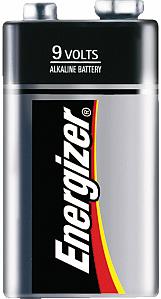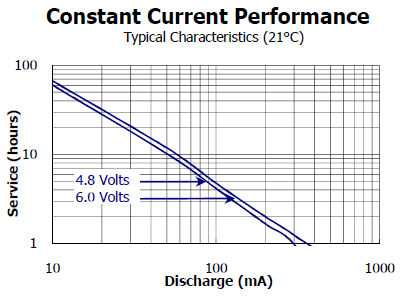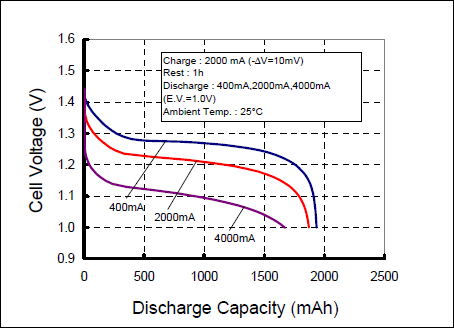Power Research
 I’d like Tiny CPU to be flexible with its power requirements. The Tiny Test Board that I made uses an external, 5V regulated power supply, and so doesn’t have any on-board voltage regulation. That works fine, but I’d like the flexibility to use other unregulated power supplies too, and especially the option to use battery power. That’s going to take a bit of work.
I’d like Tiny CPU to be flexible with its power requirements. The Tiny Test Board that I made uses an external, 5V regulated power supply, and so doesn’t have any on-board voltage regulation. That works fine, but I’d like the flexibility to use other unregulated power supplies too, and especially the option to use battery power. That’s going to take a bit of work.
The supply current measurements that I took recently showed about 150 mA used by the test board, but the demands of the real Tiny CPU board will be much higher. The Tiny CPU board will have a second CPLD, RAM, and ROM that the test board lacks, adding another 150 mA or so. It’s also likely that I’ll substitute a large graphical LCD for the small text LCD on the test board, requiring still more current. 400 mA is probably a good guess for the total current needs of the real Tiny CPU board.
400 mA is not a trivial amount of current. If I used a 9V power supply, the drop across the voltage regulator would be 4V, and power dissipation would be 4V * 400 mA = 1.6 Watts. That would probably require a TO-220 voltage regulator with a heat sink. If I used a 12V power supply, the power dissipation would be even higher, at 2.8 Watts. In theory I could use a lower voltage supply, like 6V or 7V, depending on the the capabilities of the voltage regulator used. However, 9V is the lowest voltage commonly available.
Battery Power
Powering the Tiny CPU board from a battery would make it totally self-contained. OK, a full-size PC keyboard isn’t very portable, but I could still make some interesting programs using only the buttons and switches on the board itself. Unfortunately, finding suitable batteries looks like it will be more difficult than I thought.
My first idea was to use a 9V battery. Who knew that Energizer publishes the datasheets for all their batteries? Examining the 9V alkaline datasheet was disappointing. It only has a capacity of about 500 mAh, and that’s at a discharge rate of 100 mA. It also assumes the battery is discharged all the way to 4.8V– too low for electronics. At a 400 mA discharge rate, the situation is even worse:

The 400 mA discharge rate is off the chart, somewhere in the sub-1-hour lifetime range. Yuck.
If not a 9V alkaline battery, then what? Sanyo Eneloop AA and AAA rechargeable NiMH batteries are among the best rechargeables currently available. Four AA Eneloops would provide a total voltage of about 5.4V, with substantially more capacity than the 9V alkaline battery:

Fully charged, each battery is roughly 1.4V, providing 5.6V total. The cell voltage drops rapidly, though, flattening out at about 1.25V per cell and 5.0V total, while providing 4 hours of useful battery life.
That seems like a good solution, except that it doesn’t provide enough extra voltage to operate a voltage regulator. Even using a LDO (low-dropout) regulator, it typically needs at least 5.5V input in order to get 5.0V output.
Here, then, would seem to be my options:
- Spend a lot of money on 9V batteries. Works, but not very economical.
- Use five AA batteries. Works, but… five batteries? Typical battery holders are one, two, or four batteries. It just seems strange.
- Use four AA batteries, without any voltage regulator. Works… sort of. With four fully-charged batteries, the total voltage of 5.6V would be pushing the limits of safe operation, although it would quickly fall into a more reasonable 5.0V range. This would preclude using any higher voltage wall power supply, though, and so doesn’t seem like a great option.
- Add a switch to allow optional bypassing of the voltage regulator. The regulator could be used with wall power supplies, 9V batteries, and the first minutes of use for AA batteries, then bypassed as the AA’s lose voltage. Works, but dangerous. If I forgot that the regulator was bypassed while connecting a higher voltage supply: poof, toasted board.
Option 2 is probably the best bet, but using five batteries just kind of offends my sensibilities. I’m still searching for a better solution.
Read 9 comments and join the conversation9 Comments so far
Leave a reply. For customer support issues, please use the Customer Support link instead of writing comments.


Option 5: Use a switching voltage regulator instead of a linear regulator. There are a number of parts now that are sufficiently integrated that the external parts required may be as simple as two capacitors, an inductor, and a diode (particularly for the lower current requirements). So it’s not that much more complicated than using linear regulator, but their efficiency is almost always better.
What’s neat about the switching regulators is that they can be designed to output a voltage higher than what’s going into them. Alternatively, they can be configured to regulator down, or even up or down on-the-fly (but that usually require more parts and a fancier controller).
National Semiconductor’s web site will do a lot of the design calculations for you (for their parts, of course) if you want to try some virtual experimentation:
http://www.national.com/analog/power/simple_switcher
Switching regulator is the way to go – you can easily get > 90% efficiency with stock parts. It can get a bit tricky if your designing your own from scratch, but your voltage current ratios should be easily found on most datasheets.
I’m actually kinda surprised that the board is consuming so much power. I’m guessing it’s all in the LCD backlight and RAM. (The CPLDs shouldn’t be drawing much current – if they are, you really should consider a small FPGA).
I did look briefly at switching regulators, but their advantage appears to be efficiency and not dropout voltage. Efficiency isn’t such a big deal to me, other than the heat sink. The external part count with switching regulators also seems a bit high- 8, for the smallest design at the National web site. To support both 9V and 5V inputs, I think I’d need a regulator that regulates up or down on the fly, as Erik described, which would be more complex.
Anyone want to recommend a specific switching regulator they think might work well in this project?
After a day to think about it, using 5 or 6 AAs for battery power seems like the obvious way to go. Then everything will work just fine with a standard LDO linear regulator, with either battery or line power. So what if 5 or 6 isn’t a common number for battery pack size.
I also discovered I confused Celsius and Farenheit when reading the regulator datasheet. The LM2940 can dissipate about 2.5W at 25C without a heatsink, so I theoretically shouldn’t need one. I’d probably use one anyone just to be safe, though.
The Max 7000 CPLDs are old, power-hungry designs. The 7128 I’m using requires 120-200 mA, and I’ll have two of them. Mmm, toasty.
The dropout voltage is around a volt, but National’s LM2575-5.0 (or TI’s TL2575-05) only requires 4 external components and are available in both through hole and surface mount version. But if you use surface mount parts for the external components too, you don’t have to worry about the quantity as much since most of them can be quite small.
If you don’t care about the efficiency, the linear LDO regulators would be a reasonable choice (particularly if you think battery operation would be a rare event).
That LM2575 seems promising, I’ll look into it further. Thanks! Will the ripple noise on the regulated output voltage be a concern for a digital circuit?
Yes, wall power will be the common case, with battery power a nice back-up option. With five NiMH AAs @ 7V freshly charged and a linear LDO like the LM2940, efficiency would be 71%, which isn’t so bad either.
I’d also recommend a switcher even tho’ the design is slightly more complicated.
A good switcher will be able to “suck” a lot more out of a battery than a linear regulator and it won’t have anywhere near the sam
e power wastage. i.e. It’ll be able to drive the battery down much flatter before it is no longer usable.
With a “boost” switcher you might be able to power the whole thing off of a couple of C or D cells.
After a 5 minute squiz on my local supplier I’ve found:
+ TS1935 (http://uk.farnell.com/taiwan-semiconductor/ts1935cx5-rf/boost-converter-1-6mhz-sot-25-5/dp/1476681 ) at £0.52 in single
units and…
+ SP6641 (http://uk.farnell.com/exar/sp6641bek-l-5-0/v-reg-boost-0-5a-5-0v-sot23-5/dp/1317825 ) at £1.10 in single units.
TS1935 looks like it’s got a better current output and is cheaper but the SP6641 claims specific utility in dual-alkaline cell por
table equipment.
I’ve not used either myself and I’ve only had a brief look at the datasheets so more investigation is definitely required. 😉
It looks like you might be able to find something to experiment with for a couple of dollars.
Hello!
To be honest about Eveready, so was I. As it happens most of this is common to the people in the robotics business.
They end up learning, sometimes the hardway, about battery lifetime, and all of what you’ve documented.
David Heiserman documents all of that if you really want to know, in his books on that subject. There is also an excellent text on robotics and Linux who spends sometime going into that same area. It’s one of the reasons why laptops use very specialized battery packs for their day to day work.
OK, I’ve decided to forget about any kind of on-board voltage regulator for now, and continue using my externally-regulated supply. I already have too many other things to figure out without poring over boost regulator datasheets too. I’ll look at adding battery support through a small add-on card or externally-connected pack later.
I think using five batteries would be fine. Sure, it would seem strange, but I don’t think it would present real problems (unless you have a battery recharger that insists only an even number of batteries at a time). There are certainly devices using six AA batteries.